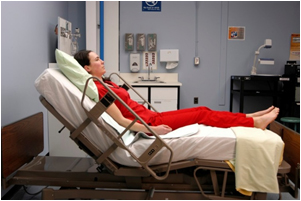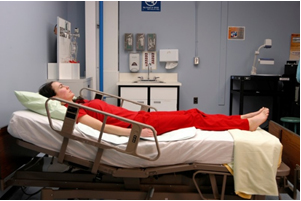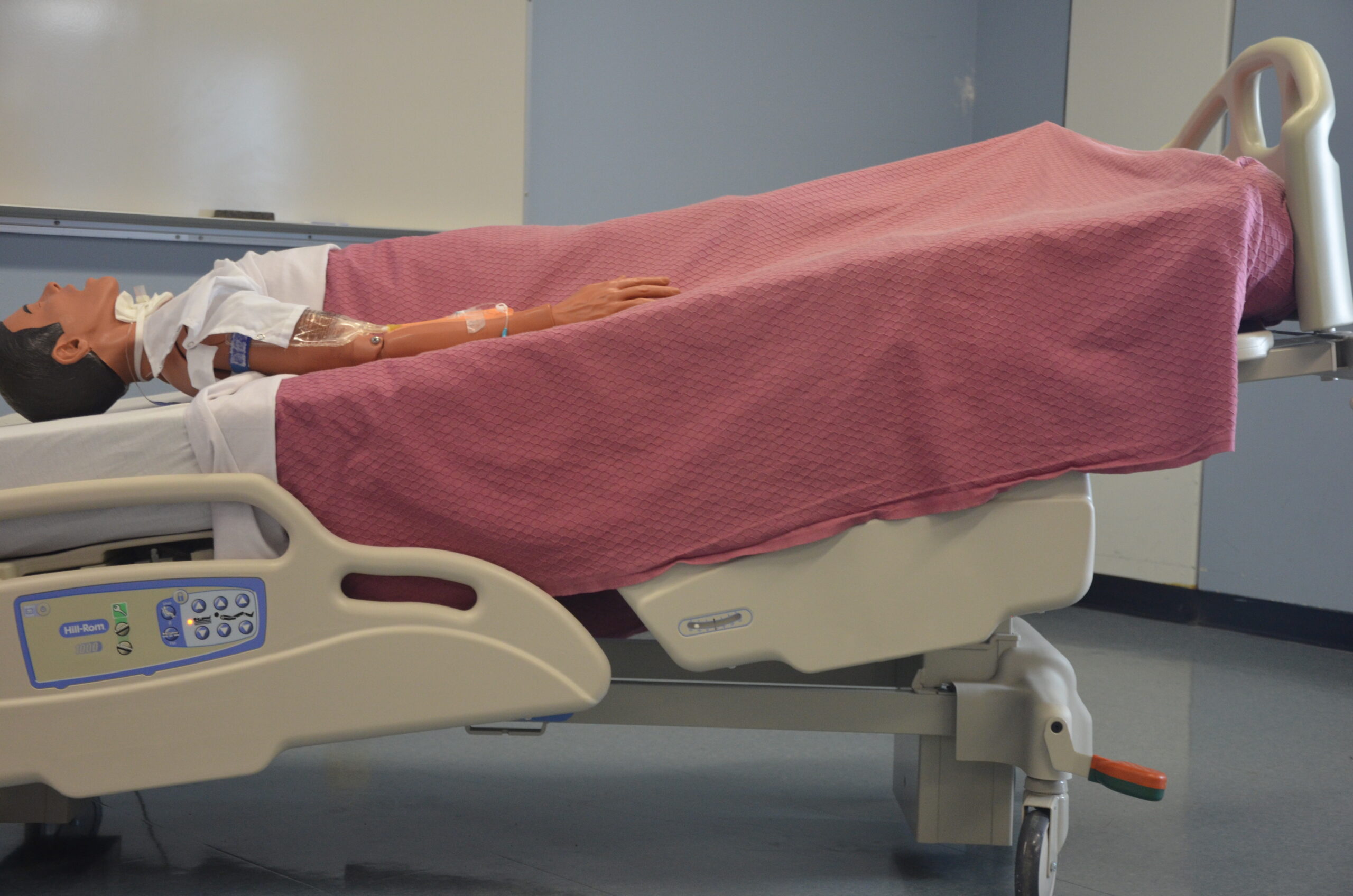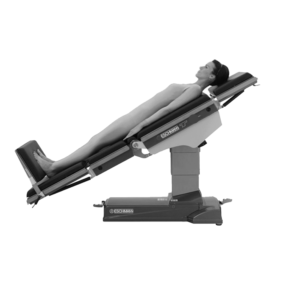5.2 Types of Bed Positions
Hospital beds can be adjusted into various positions based on the client’s needs, diagnosis, or condition. It is important to know these common bed positions, so that you can effectively communicate with the health care team.
Fowler’s Position
The standard client position is the Fowler's position, where the client is in a semi-upright seated position, at about a 45–60-degree angle, with the knees either bent or straight. This position is considered standard because it allows the client’s abdominal muscles to relax, making it easier to breathe and eat. It is frequently used for clients with oral or nasal gastric feeding tubes because it minimizes the risk of aspiration. In addition, peristalsis and swallowing are aided by the effect of gravitational pull. This is a common position to provide client comfort and care.
High Fowler’s position is used to describe a client’s position, where the upper body is positioned approximately 60–90 degrees in relation to the lower body. This position may be used while you assist a client to eat when they are at risk for choking and aspiration.

Semi-Fowler’s
The client sits at a 30–45-degree angle. Semi-Fowler's position is slightly lower than the Fowler’s position. It can also be used for clients with a feeding tube.

Trendelenberg
In the Trendelenberg position, the client lies flat on their back in the supine position, with their feet elevated higher than their head by about 15–30 degrees. This position is used in situations such as hypotension and medical emergencies as it helps promote venous return to major organs, such as the head and heart.

Reverse Trendelenberg
With the reverse Trendelenburg position, the head is slightly higher than the feet at 15–30 degrees. This position may be used to promote gastric emptying.

The client’s head of bed is placed at an angle between 45 degrees and 60 degrees. Hips may or may not be flexed. It’s a common position to provide client comfort and care.
Slightly lower than Fowler’s position, the client is seated in bed at a 30–45-degree angle. The client’s head of bed is placed at a 30-degree angle. This position is used for clients who have cardiac or respiratory conditions and for patients with a nasogastric tube.
A position that places the head of the bed lower than the feet. Client lays flat on their back with feet elevated higher than their head by 15–30 degrees. Used in situations such as hypotension and medical emergencies, this position helps promote venous return to major organs such as the head and heart.
The client lies flat on their back, facing upward. Additional supportive devices may be added for comfort.
Client lays flat on their back with head higher than feet by 15–30 degrees.

